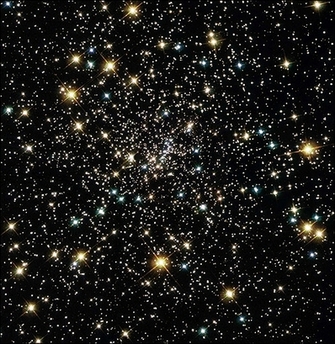Telescope gives deepest view of space
(AP)Updated: 2007-07-13 09:57
HILO, Hawaii - Astronomers believe they've glimpsed light from some of the universe's first stars through the world's largest telescope on the Big Island. The astronomy team from the California Institute of Technology, which was to present its findings in London on Wednesday, said they used the Keck II telescope atop Mauna Kea volcano to see farther into space than ever before.
 View of a star cluster in outer space. Astronomers on Wednesday announced they had spotted the first planet beyond the Solar System that has water, the precious ingredient for life. [Agencies]  |
"We have detected six faint star-forming galaxies," said graduate student Dan Stark. "We estimate the combined radiation output of this population could be sufficient to break apart the hydrogen atoms in space at that time, thereby ending the Dark Ages."
The astronomers said they were able to push the telescope to its limits by using a gravitational lens.
Team leader Richard Ellis said the group's technique was to increase the telescope's magnifying capability by focusing on a large object in the foreground and then looking around its edges into the space beyond. The bending of light around the object creates the universe's own magnification.
In this case, the scientists used a massive cluster of galaxies to do the light bending for them.
These faraway galaxies appeared to be very faint because their light has been traveling through space over these billions of years, Ellis said.
"There's not a chance we could have done it with a smaller scope," he said.
The researchers made their discoveries months ago after they spent 14 nights observing the sky.
They waited until completing tests to support their findings before revealing what they saw.
|
|
|
||
|
|